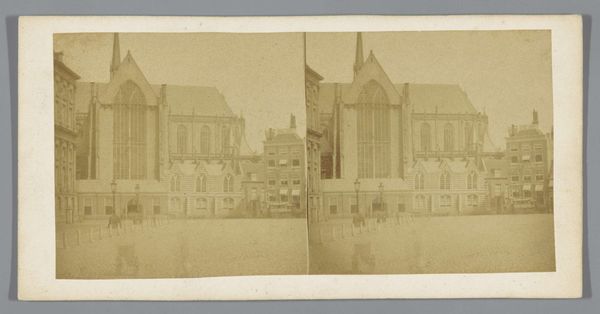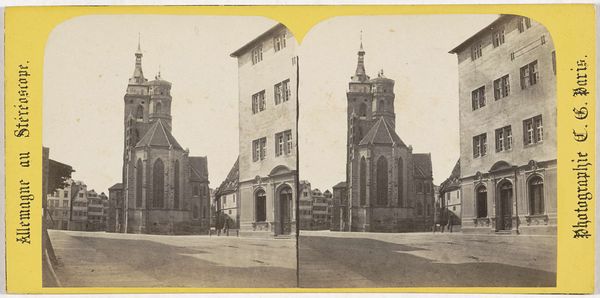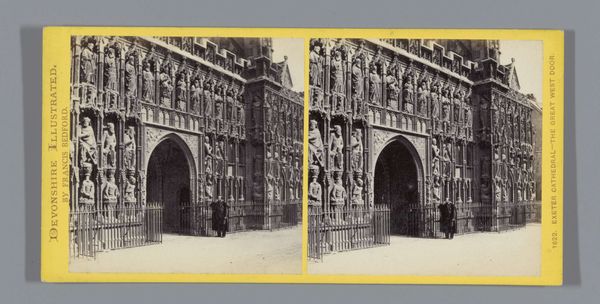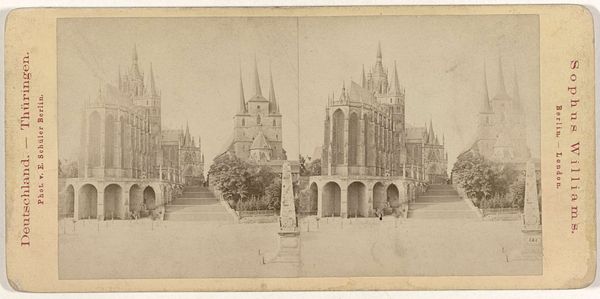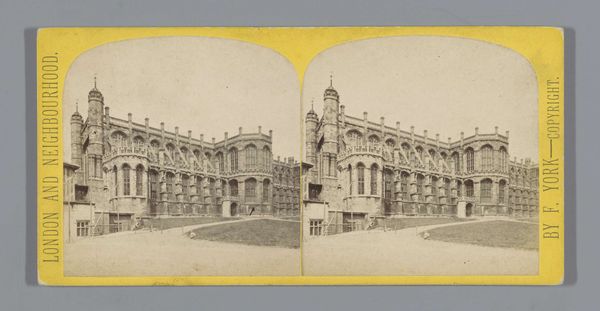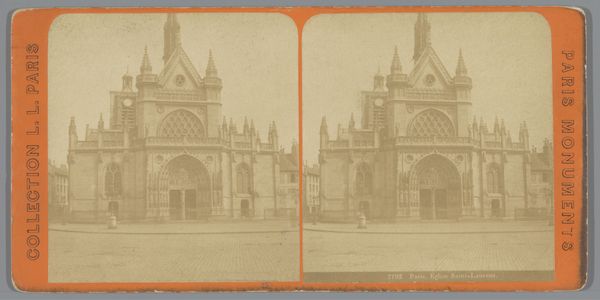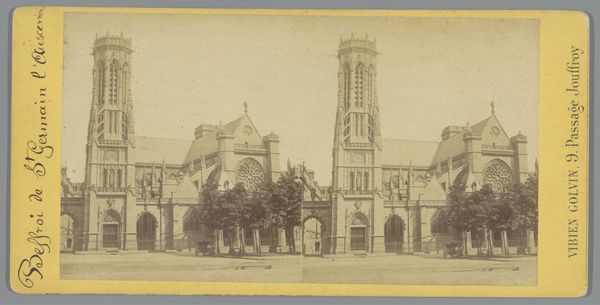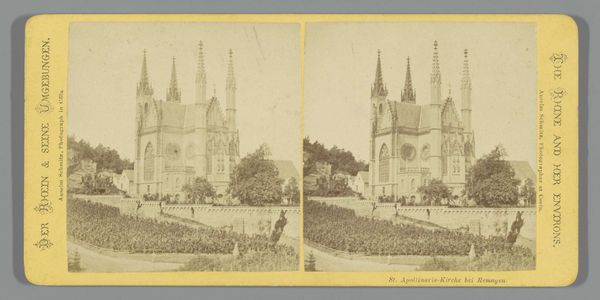
print, photography
# print
#
photography
#
cityscape
#
realism
Dimensions: height 87 mm, width 177 mm
Copyright: Rijks Museum: Open Domain
Curator: This stereoscopic albumen print, titled "Altstadtmarkt en het stadhuis van Braunschweig" by Johann Friedrich Stiehm, made sometime between 1867 and 1872, is an intriguing depiction of a German cityscape. What are your initial thoughts on the photograph, especially given its age and production method? Editor: It's remarkable how clear and detailed it is, especially considering it's over 150 years old. The architectural details of the buildings are really striking. It almost feels like stepping back in time. I'm curious about the context surrounding the production of these images; how do you interpret this work in terms of materials and processes of its creation? Curator: A materialist perspective here focuses our attention on Stiehm's workshop practice and the market forces at play. Stereoscopic prints, like this one, were immensely popular, essentially early forms of mass media and entertainment. The albumen process itself is crucial. We consider the labour involved in producing the albumen emulsion from egg whites, the costs of chemicals, the specialized lenses required for the stereo effect. How does the act of mass-producing such imagery affect its perception, especially within the rise of industrial photography? Editor: I see, so instead of focusing solely on Stiehm’s artistic intention, we also need to think about the workers involved, the economic aspects, and how the consumption of these images impacted society? It was a commercial enterprise in some respect. Curator: Precisely. The choice of subject – a prosperous city square – is also significant. Who were the consumers of these images and what did the cityscape symbolize to them during a time of immense change and technological innovation? Consider also, the relative value and purchasing power of the final work. Editor: Thinking about it that way makes me reconsider its meaning. It’s not just a picture; it's a commodity that reflects the socio-economic context of its time. I see that this kind of historical document provides raw data on how societies saw and built themselves, that is so different to our contemporary digital photography context. Curator: Exactly. Examining the materiality and the context of production adds layers of complexity that reveal the social and economic forces shaping visual culture. It's a tangible piece of history viewed through the lens of its own creation. Editor: I'll definitely be paying more attention to the materials and the making processes behind art in the future! Thank you.
Comments
No comments
Be the first to comment and join the conversation on the ultimate creative platform.




